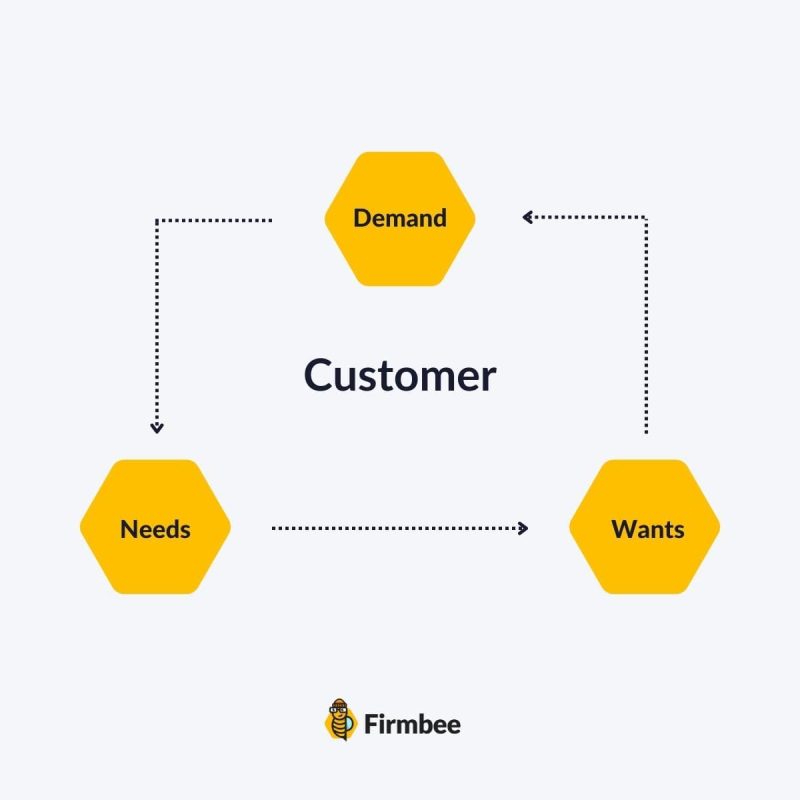The key for a startup is to find out what customers really want. The blueprint for business success in this case can be boiled down to three things: find the problem, assess it and come up with a solution. This is what we will focus on in the following article. Read on.
How to write a good problem statement for your startup? – table of contents:
- Why do startups fail?
- How to write a good problem statement?
- How to assess your customers’ problems?
- Minimum Viable Product (MVP)
Why do startups fail?
A study by CB Insights showed that as many as 42% of startups fail because they develop products that are not desired in the market. This means that many business ventures become unsuccessful simply because no one has checked what customers’ needs are.
It can be stated that such startups are trying to adapt customers to their products, not the other way around. This alone actually gives the answer to the question of whether the starting point should be a specific product or a customer problem. Of course, the key here, as in any business, is the customer.
A startup is a specific organization as it is fundamentally temporary. Its goal is to find a viable business model, and innovation is inscribed in its nature. Obviously, this innovation and search carry a risk of failure. Putting the product before the customer greatly increases this risk.
Experts even advise budding entrepreneurs to “get out of the building” and consult with customers before they start developing a new product or service. Only in this way will they be able to obtain reliable information about what their potential customers actually need. Hence, concepts such as Customer Development or Lean Startup have emerged.
What is more, involving customers early in the startup process has many benefits. Among others, it enables startup owners to create offers that customers are willing to pay for. Many researchers stress that only by gaining this knowledge can entrepreneurs successfully target a product or service that actually solves a real customer problem.
How to write a good problem statement?
In the context of what we’ve written earlier, it is clear that your business plan should be only developed after identifying the customer’s problem. How to do it? A business guru, Steve Blank, argues that since only customers know (consciously or not) what they actually want, the best way to find out what to sell them is to obtain their feedback.
Otherwise, after months or even years of development, entrepreneurs find out that customers don’t need most of the product features. Before moving on to specific ways to learn about customers’ problems, it is necessary to explain that they may experience various types of them. Thus, the following distinction can be made:
- Active problem. This is a problem of great urgency. Customers seek a solution to it, but without success.
- Passive problem. It is known to your potential customers, but they don’t take any action to solve it or don’t see any possibility of solving it.
- Hidden problem. Customers don’t realize that they actually have a given problem as they haven’t identified it yet.
Nowadays you can use various strategies and solutions to identify your potential customers’ needs and finally write a good problem statement. In general, they can be divided into offline and online methods. The former can include, among others, customer interviews. They can be conducted either directly or through various types of surveys.
Such questionnaires may include not only complete strangers (belonging to the target group), but also friends and family members. Online research involves various types of surveys as well, but in electronic form. To conduct online research you may use social media, discussion forums, and online comments.

How to assess your customers’ problems?
Gathering information about customer problems is just the beginning of your work on finding the perfect product or service. In the next step, it is necessary to carefully analyze the collected information. Each problem should be considered in terms of three attributes:
- Unfeasible. Customers are unable to solve the problem in question using products or services currently available in the market, although they are actively searching for a solution.
- Unavoidable. It is a problem that remains beyond the customers’ control. Customers are actively seeking a solution to it.
- Urgent. It is a serious, cumbersome problem of a high priority. It’s hard to function without its solution.
It is worth sorting out problems according to these criteria. This will give you an idea of the direction in which you should develop your product.
Minimum Viable Product (MVP)
With adequate knowledge of potential customers’ problems and analysis, you can move on to evaluating the solution you can offer. You should think about how your solution can actually become what customers in the market are searching for. The question that needs to be answered here is what direction you should take to actually create an antidote to the given problem.
Are you even able to provide such a solution? This will allow you to develop a product that meets your customers’ expectations and requirements. This phase should end with the creation of a minimum viable product (MVP) to try out specific solutions on customers. This is when you enter the phase of testing hypotheses and confirming customer interest.
Summary
For a startup, but also for any other business, the starting point should always be to identify the customer’s problem. It is much easier to tailor a product to the customers’ needs than to create demand for it. If your offer doesn’t solve a real problem, sooner or later it will become useless. This means lost time, lost energy and often the end of your business.
We’ve just answered the question: How to write a good problem statement for your startup? Want more advice? Check out our other articles: The use of social media in the recruitment process.
If you like our content, join our busy bees community on Facebook, Twitter, LinkedIn, Instagram, YouTube, Pinterest.
Author: Andy Nichols
A problem solver with 5 different degrees and endless reserves of motivation. This makes him a perfect Business Owner & Manager. When searching for employees and partners, openness and curiosity of the world are qualities he values the most.
Launch your startup:
- What is a startup?
- Pros and cons of creating a startup
- 8 best industries for startups
- Top 5 skills every highly successful startup founder needs
- How to create a startup? 7 simple and easy steps
- 6 essential startup development stages
- How to create a startup growth strategy?
- General startup statistics you need to know
- Startup vs. corporate job. Which is right for you?
- 5 incredible companies that started in a garage
- How to find a business idea?
- How to check if your startup idea already exists?
- How to name a startup? Useful tips and strategies
- How to gain business knowledge quickly? 5 best practices
- Why do startups fail? 6 startup ideas you should avoid
- 5 weird business ideas that made millions
- Top 6 most profitable small businesses
- 7 questions to determine if your business idea is worth pursuing
- What is a buyer persona? 5 benefits of creating a buyer persona
- How to validate your business idea? 3 easy steps
- Should you follow your passion? The importance of passion in business
- What is market reseach and why is it important?
- Using social media in business
- What to do when you have too many business ideas?
- How to write a good problem statement for your startup?
- How to test your business idea for real?
- How to create a prototype for a product?
- How to build an MVP?
- How to use surveys for testing your business idea?
- 10 useful tools to validate your business idea
- What is a business plan? 4 types of business plans
- What should be included in a business plan?
- What should a product description include?
- Competitor analysis
- Marketing strategy
- Traditional business plan vs. lean startup plan
- Implementation plan. What is it and how to create it?
- Everything you need to know about patents
- Financial management for startups
- What permits and licenses does my startup need?
- What is the average startup founder salary?
- 4 startup taxes you need to pay
- Which legal structure is best for your business?
- Startup costs. How much money will you need?
- Protection of intellectual property in a startup
- Family funding vs. self-funding
- What is a shareholders’ agreement?
- What should a financial section of a business plan include?


















